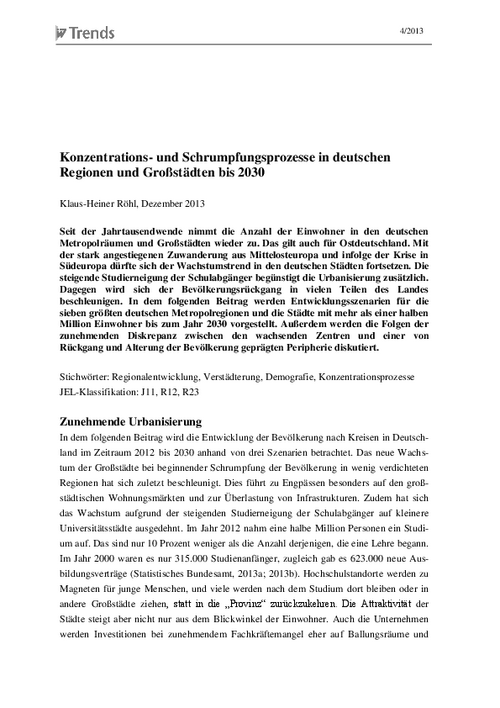Since the turn of the millennium the populations of large German cities and metropolitan areas have been growing again. This applies even to eastern Germany, where the overall population trend has been consistently downward. With a steep rise in immigration from eastern central Europe and the effects of the economic crisis in southern Europe, the growth trend in German cities can be expected to continue. The increasing inclination of school-leavers to attend university is also promoting urbanisation. On the other hand, the decline in population in many parts of the country will accelerate. The article presents development scenarios up to the year 2030 for Germany’s seven largest metropolitan regions and cities with more than half a million inhabitants. In addition, the consequences of the increasing discrepancy between the dynamic urban centres and a periphery characterised by a declining and ageing population are discussed.

Concentration and Shrinking Processes in German Regions and Cities up to 2030
IW-Trends


Klaus-Heiner Röhl: Konzentrations- und Schrumpfungsprozesse in deutschen Regionen und Großstädten bis 2030
IW-Trends

More on the topic

Possible Developments in the Supply of Skilled Workers up to the Year 2040
The German labor market is on the verge of a fundamental upheaval. While the number of people in the labor force has risen steadily in recent decades, it is likely to drop significantly as soon as the baby boomers retire.
IW
The Social Situation of Young People from Non-German-Speaking Families
An analysis of the microcensus shows that in 2017, around 2.4 million children and adolescents in Germany lived in non-German-speaking households. This corresponds to 17.7 per cent of all minors (under the age of eighteen) and 47.0 per cent of those with a ...
IW